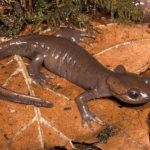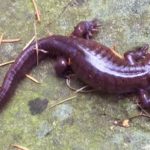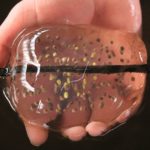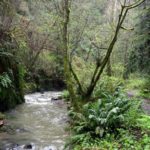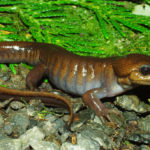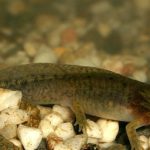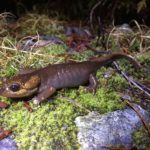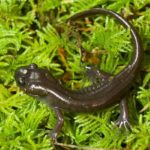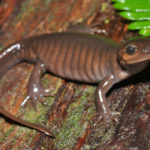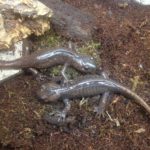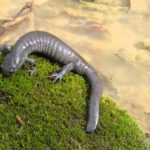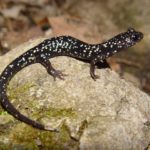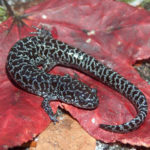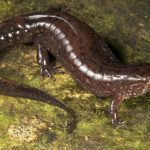Home > Salamanders > Northwestern Salamander
Northwestern Salamander
Northwestern salamander is a species of fairly large salamander found in North America. There are two forms of this species, namely the aquatic form and the terrestrial form. The aquatic form is diurnal whereas the salamanders inhabiting the land are nocturnal.
| Kingdom | Animalia |
| Phylum | Chordata |
| Class | Lissamphibia |
| Order | Caudata |
| Family | Ambystomatidae |
| Genus | Ambystoma |
| Scientific Name | Ambystoma gracile |
| Size | Around 8.7 in (22 cm) |
| Color | Olive-green or brownish upper surface to dark gray to pale white or light brown underside; some individuals may have non-uniform, small, light- colored blotches on the upper surface |
| Distribution | Alaska, Washington, Oregon, California (United States), Canada |
| Habitat | Moist environment ranging from grassland to mesophytic forests |
| Diet | Small invertebrates, tadpoles, snails |
| Predators | Fish |
| Breeding Season | January-May |
| Mode of Reproduction | Oviparous (egg laying) |
| Clutch Size | 30 to 270 eggs |
| Incubation Period | 1 to 2 months |
| Metamorphosis Period | 12 to 14 months |
| Reproductive Age | 1 year of age |
| Average Lifespan | In wild: 5 years In captivity: 10.2 years |
| IUCN Conservation Status | Least Concern |
Northwestern Salamander Pictures Gallery
- Ambystoma Gracile
- Images of Northwestern Salamander
- Northwestern Salamander Eggs
- Northwestern Salamander Habitat
- Northwestern Salamander Images
- Northwestern Salamander Larvae
- Northwestern Salamander Photos
- Northwestern Salamander Pictures
- Northwestern Salamander
- Northwestern Salamanders
Published on March 10th 2017 by staff under Salamanders. Article was last reviewed on 30th September 2019.
